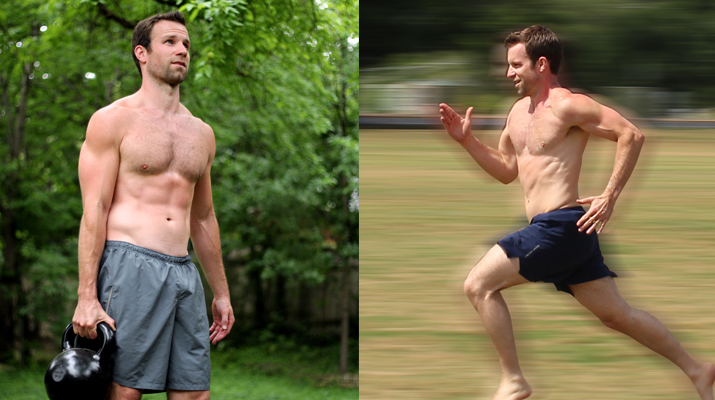Fasted cardio has become a buzzword in the fitness world, promising fat loss and improved energy utilization. But what is it really about? In this guide, we’ll explore what fasted cardio is, the benefits it offers, how to do it effectively, and some important considerations to keep in mind.
What Is Fasted Cardio?
Fasted cardio refers to performing cardiovascular exercise on an empty stomach, typically after 8-12 hours of fasting. This is most commonly done first thing in the morning before breakfast, as the body has depleted its glycogen stores overnight and may rely more on fat for energy.
The Science Behind Fasted Cardio
When your body is in a fasted state, insulin levels are low, which can promote fat oxidation. Without readily available glycogen (stored carbohydrates), your body may turn to stored fat for fuel. Studies have shown that fasted exercise can increase fat utilization during the workout, although the overall impact on fat loss depends on factors like diet, total caloric intake, and other types of exercise.

Benefits of Fasted Cardio
- Increased Fat Utilization: Fasted cardio encourages your body to burn fat as its primary energy source, potentially aiding in fat loss over time.
- Improved Insulin Sensitivity: Regular fasted workouts may improve insulin sensitivity, which is beneficial for overall metabolic health and weight management.
- Convenience: Exercising before breakfast can save time, allowing you to fit your workout into a busy schedule more easily.
- Mental Clarity: Many people report feeling more alert and focused after a fasted workout, which can set a positive tone for the day.
- Hormonal Benefits: Fasting can elevate growth hormone levels, which may support muscle preservation and fat metabolism.
The Role of a Caloric Deficit in Fat Loss
While fasted cardio can enhance fat utilization during exercise, its effectiveness for long-term fat loss depends on maintaining a caloric deficit. A caloric deficit occurs when you consume fewer calories than you burn, prompting your body to use stored fat as energy. Combining fasted cardio with a diet that supports a caloric deficit is key for achieving sustainable fat loss.
How to Do Fasted Cardio Effectively
- Choose the Right Exercise: Opt for low-to-moderate intensity activities like brisk walking, jogging, cycling, or swimming. High-intensity workouts may require more readily available energy and could lead to muscle breakdown if performed in a fasted state.
- Time It Right: The best time for fasted cardio is early in the morning after an overnight fast of at least 8 hours. This ensures your insulin levels are low and glycogen stores are partially depleted.
- Stay Hydrated: Drink water before, during, and after your workout. Dehydration can impair performance and make fasted cardio more challenging.
- Start Slow: If you’re new to fasted cardio, ease into it. Begin with shorter sessions (15-20 minutes) and gradually increase the duration as your body adapts.
- Fuel Up Post-Workout: After your session, have a balanced meal with protein and carbohydrates to support recovery and replenish energy stores.

Who Should Avoid Fasted Cardio?
Fasted cardio isn’t suitable for everyone. It may not be ideal for individuals with conditions like diabetes, low blood pressure, or a history of disordered eating. Pregnant women, people with intense training schedules, and those with high caloric needs may also benefit more from fed workouts. Always consult a healthcare professional before making significant changes to your fitness routine.
Common Myths About Fasted Cardio
- “Fasted cardio burns more calories.” While fasted cardio may increase fat utilization during the workout, the total caloric burn is similar to fed cardio. Long-term fat loss depends on maintaining a calorie deficit.
- “It’s better than fed cardio for fat loss.” Research shows that both fasted and fed cardio can be effective for fat loss when combined with a healthy diet and regular exercise.
- “You’ll lose muscle.” If performed at moderate intensity and for reasonable durations, fasted cardio is unlikely to lead to significant muscle loss. Consuming enough protein throughout the day can also help preserve muscle mass.
Tips for Success
- Combine Fasted Cardio with a Caloric Deficit: To maximize fat loss, ensure your diet supports a caloric deficit. Focus on nutrient-dense foods and monitor your caloric intake to maintain a balance between energy expenditure and consumption.
- Listen to Your Body: If you feel dizzy, weak, or overly fatigued during fasted cardio, stop and consider eating a small snack before exercising.
- Mix It Up: Combine fasted cardio with other types of exercise, such as resistance training and fed workouts, for a well-rounded fitness routine.
- Track Your Progress: Keep a journal of your workouts, diet, and how you feel afterward. This can help you determine if fasted cardio is right for you.
Fasted cardio, a popular practice among fitness enthusiasts, involves performing cardiovascular exercises on an empty stomach, typically after waking up in the morning. This approach is thought to accelerate fat burning by utilizing stored fat as an energy source. While the debate around its effectiveness continues, many swear by fasted cardio to jumpstart their metabolism and achieve fitness goals. If you’re curious about incorporating fasted cardio into your routine, here are some excellent exercises to try:
1. Walking or Power Walking
Walking is a low-impact, beginner-friendly form of cardio that is perfect for fasted sessions. A brisk 30- to 60-minute walk can help burn calories and improve cardiovascular health. For a more intense session, power walking increases the heart rate and engages more muscle groups while remaining gentle on the joints.
Tips:
- Choose a scenic route or treadmill to keep it engaging.
- Maintain a steady pace to maximize fat burning.
2. Jogging or Running
For those with a higher fitness level, jogging or running is a fantastic way to enhance cardiovascular endurance and burn calories quickly. Fasted jogging or running in the morning can be invigorating, helping you start your day energized.
Tips:
- Start with a warm-up walk to prepare your muscles.
- Focus on a consistent pace rather than speed for sustained fat-burning.
3. Cycling
Whether indoors on a stationary bike or outdoors on a scenic trail, cycling is a versatile exercise that engages the lower body and promotes calorie burn. It’s particularly effective when done on an empty stomach as it’s less jarring than running while still offering a solid workout.
Tips:
- Adjust resistance levels to challenge yourself.
- Wear appropriate gear for safety and comfort.
4. Jump Rope
Jumping rope is an excellent high-intensity cardio option that improves coordination, burns calories, and strengthens the lower body. It’s efficient, allowing you to achieve a great workout in a short amount of time.
Tips:
- Start with short intervals and gradually increase duration.
- Use a properly sized rope to minimize tripping.
5. High-Intensity Interval Training (HIIT)
HIIT workouts combine short bursts of intense activity with brief rest periods. Exercises like burpees, mountain climbers, and jumping jacks can be performed in circuits for an effective fasted cardio session.
Tips:
- Keep sessions short (10-20 minutes) to prevent overexertion.
- Ensure proper form to avoid injury, especially when fatigued.
6. Swimming
Swimming is a full-body workout that’s easy on the joints and highly effective for cardiovascular health. Morning laps in the pool can help you burn calories while improving endurance and muscle tone.
Tips:
- Start with a warm-up and gradually increase your pace.
- Mix different strokes for variety and balanced muscle engagement.
7. Rowing
Using a rowing machine or rowing on water engages the entire body, making it a powerful fasted cardio option. It’s particularly good for building both strength and endurance.
Tips:
- Focus on proper technique to maximize efficiency.
- Incorporate intervals to elevate intensity.
8. Bodyweight Circuits
Bodyweight exercises like squats, lunges, push-ups, and planks can be combined into a circuit for a fasted cardio workout. These exercises not only elevate your heart rate but also build strength and flexibility.
Tips:
- Plan your circuit in advance to minimize rest periods.
- Use a timer to keep your workout on track.
9. Stair Climbing
Climbing stairs is a fantastic way to burn calories and strengthen your legs. Whether you’re at a park, stadium, or using a stair climber at the gym, this exercise is efficient and effective.
Tips:
- Focus on controlled movements to avoid injury.
- Use handrails for balance if needed.
10. Dance Workouts
Dancing is a fun and dynamic form of cardio that can be done in a fasted state. Whether it’s Zumba, hip-hop, or freestyle in your living room, dance workouts are great for breaking a sweat and boosting your mood.
Tips:
- Choose upbeat music to keep you motivated.
- Don’t worry about precision—focus on staying active and having fun.

Safety Considerations for Fasted Cardio
While fasted cardio can be effective, it’s not suitable for everyone. Keep the following in mind:
- Listen to Your Body: If you feel lightheaded or fatigued, stop immediately.
- Stay Hydrated: Drink water before and after your workout.
- Ease Into It: Start with low-intensity exercises and progress gradually.
- Consider Your Goals: Fasted cardio may not be ideal for muscle gain or high-performance training.
- Consult a Professional: If you have underlying health conditions, seek advice from a doctor or fitness expert.
By incorporating these exercises into your routine, you can make fasted cardio an enjoyable and effective part of your fitness journey. Remember, consistency and proper technique are key to achieving your goals.
Conclusion
Fasted cardio can be an effective tool for fat loss and metabolic health when done correctly. By understanding the science, benefits, and best practices, you can incorporate it into your routine safely and effectively. Remember, fitness is not one-size-fits-all, and what works for one person may not work for another. Combining fasted cardio with a caloric deficit and a balanced diet is the key to achieving sustainable fat loss. Experiment, listen to your body, and find the approach that suits your goals and lifestyle.


